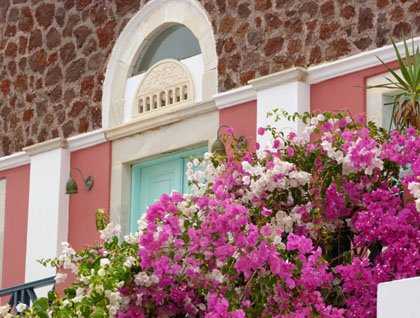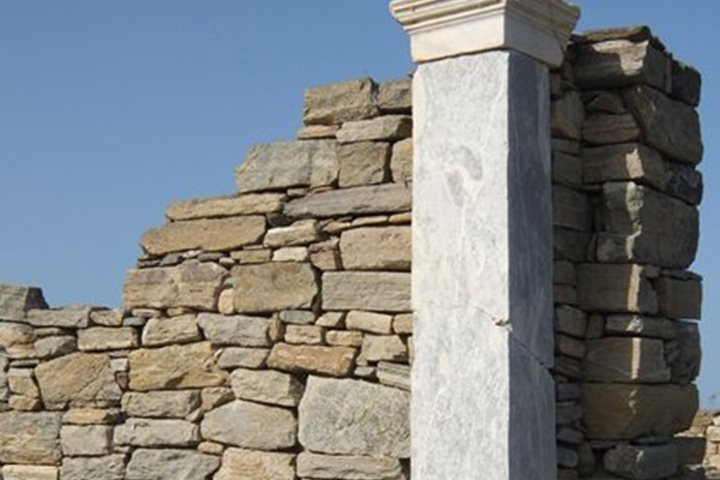Imaginations can run wild in the dark of night. Having watched the adventures of the four-masted barque, Peking, in the movie Around Cape Horn and hearing that the winds were to increase by the end of our day today, visions of an A-number one storm were dancing in our heads as we laid upon our pillows. Bound for Santorini or Thera, as it is also known, we had studied its fascinating geology and knew that we were to sail right into the middle of an active caldera. Maybe we didn’t have nightmares but we were certainly ready to rise before the crack of dawn to see just what was going on outside.
A Cheshire moon grinned through fractures in the cloudy sky. Lights poured down the sides of silhouetted Santorini, like molten magma slowing flowing toward the sea. Morning stayed hidden behind its heavy blanket. Filtered light revealed whitewashed towns perched high above on precipitous cliffs. Cradled in the embracing arms of the crater’s remnants we discovered two “burned Islands,” two volcanic domes that had grown since the time in 1628 B.C. when Thera blew her lid. Colors of fire patterned the cliff faces, each representing a different eruptive event. But it was the last, the most massive that dominated the scene, leaving behind a thick coating of ashy white tuff that carpeted the crest.
Picture postcard Oia, hosted our morning explorations. White cubic houses and blue-domed churches capture one’s attention constantly, often masking hidden treasures like fortresses of old or churches built of stone. Buildings burrowed into cliffs, safe from earthquakes’ destructive shakings while others were left as they had tumbled 50 plus years ago.
From one tip of the crescent to the other we journeyed, peering down, down into the sea-filled crater whenever we could. There, upon a wind-churned sea, our lovely Sea Cloud paced, awaiting our return. From the vista high above, the circular form of the original island could be appreciated. Big bites are missing from its western edge leaving tiny Aspro and Thirassia as isolated remnants.
Our noon hour gastronomic cravings were satisfied at the Kallisti Restaurant, and we left the town of Pirgos behind totally satiated. Was it Atlantis to which we ventured next? Maybe not, but certainly the excavated town of Akrotiri is teeming with as much mystery. Buried beneath the tuff for more than thirty-six hundred years, little by little this Pompeii of Greece has revealed an almost unbelievable story of a city of great sophistication. What was it that set the world on such a backward course that we forgot what was once known?
Oh yes, back to the thoughts of wind and dashing seas. Well, the wind did blow; in fact it is blowing still. But it chased away the clouds and let the sun paint the sea and sky the shades of Santorini blue.







